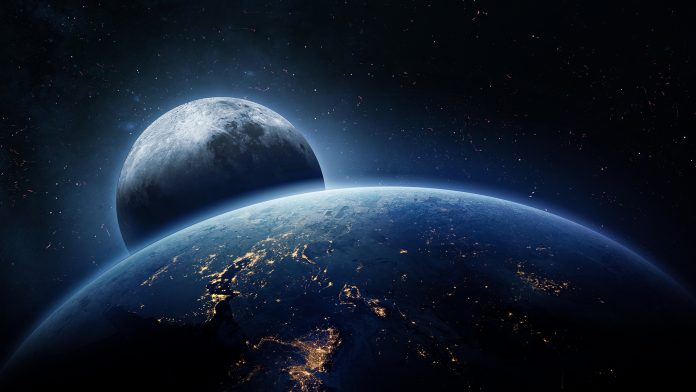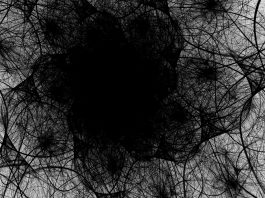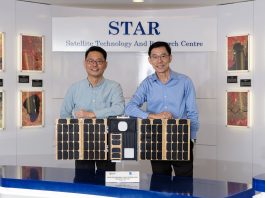The space sector has seen a significant increase in new players over the past year alone. As the number of nations with thriving space initiatives expands, so does the number of potential projects.
The space sector has moved from being a means to compete at an international level to a serious commercial enterprise offering opportunities for new businesses and improving day-to-day lives.
The amount space brings to the economy has already grown by £1bn,1 meaning the country can expect to see a noticeable increase in investment towards job creation, recruitment, and skills development.
As George Freeman, Minister of State at the Department of Science, Innovation and Technology, stated as part of the recent International Bilateral Fund (IBF) announcement: “The global commercial space tech sector is growing fast, creating big opportunities for the UK to convert our longstanding space science excellence into a fast-growing commercial industry.”2
However, if the UK is to keep pace, there needs to be a steady investment in the right areas. As part of its ten-year National Space Strategy, the UK Space Agency hopes to establish the UK as “one of the world’s most innovative and attractive space economies.”3 This announcement is partly driven by the ongoing European space race,4 as countries and regions feel the pressure to establish their own access to space and avoid being “strategically dependent [or] economically deprived of a major part of this value chain.”5
With the IBF, the UK Space Agency looks to establish the UK’s national strengths, support new space capabilities, deepening international partnerships in areas like Earth observation, space debris and space traffic control. However, if the UK space sector is to continue to grow, it will need to overcome some challenges, namely the potential dangers posed by space debris to satellite launches in the future.
‘Traffic congestion’ and the danger posed by space debris
One major challenge in the space sector is the ever-growing amount of space debris. According to research undertaken by the Royal Society6, over 7,000 tonnes of space junk has been generated, mostly in the form of empty rocket casings and dead satellites.
The huge surge in the construction of satellite constellations in Low Earth Orbit (LEO) is presenting serious logistical challenges, many of which operators may have not really encountered before – including the allocation of frequencies for these systems, as well as overall traffic management. The industry needs to address how future satellites will be deployed and managed effectively and to mitigate the risk of collisions, interference, and preventable incidents.
Some companies are already exploring the creation of vehicles to send to space, with the purpose of refuelling and moving satellites to extend their lives. The level of danger posed by space debris in the atmosphere could be decreased through the implementation of Space Traffic Management (STM).
Moving forwards, future satellites and arrays will need to be designed to address debris issues in mind, such as changes to the orbit, whilst also being capable of operating if any damage does occur. For example, damage to modular systems such as solar arrays.
Companies will have to consider the potential danger posed by space debris to satellite launches in the future. It is a collective responsibility for the international space sector, but the UK has a role to play here, and this should be factored into its ongoing space strategy. It is essential to improve the current space environment for the greater good. 2023 could be a landmark year for this.
Satellite constellations providing internet connectivity to rural areas
IoT networks and satellites could eventually bring internet service to remote areas of the world. However, developers still need to create a standard for network connections.
Although this may initially appear to be more of a global concern, the UK is also focusing on this as part of its growth, as access to the internet has become an essential foundation and key target for the collective space sector.
In order to assist with ongoing projects, the space industry will need to consider boosting the number of satellites and constellations. LEO satellites can connect people across the world to high-speed internet where established ground infrastructure is hard to reach, making them an attractive solution to close the rural connectivity gap.
A key benefit is that we can begin to develop a deeper understanding of the environment in these places and learn how to monitor for storms, assess their impact, and provide guidance for agriculture operations.
In addition, rural areas are usually more expensive to deliver broadband to due to the geographies of some of these areas. This means also there is an increase in installation costs, and low population densities reduce the commercial return for providers.
It seems likely that significant progress in addressing this concern in the future, will be made through the planned satellite constellations. This improved connectivity will provide access to work, school, and medical care.
Addressing future air quality concerns using satellite technology
If the UK space sector is to continue to grow, it is important that air quality measuring projects are included in ongoing investment plans.
This will require much planning and the implementation of communication, control, command, and detection systems to support operations. However, this can be achieved if the UK government focuses on strengthening the air quality regulations.
Satellites and drones are designed to identify key pollutants and remove biases associated with ground-level measurements. Satellite networks could be utilised to improve communications and control.
With the addition of Artificial Intelligence, it would be possible to identify likely conflicts and provide warnings to operators more easily. There are still concerns to be addressed when it comes to satellites and air quality, namely the limited spatial and temporal resolution.
As it currently stands, scientists are mainly able to use satellites to generate snapshots of poor air quality, whilst still lacking the data to fully understand regional variability. Although much progress has been made, there is room for improvement.
International space agencies are investing heavily in pollution monitoring projects, which is important for the UK. An example of this can be seen through the launch of NASA TEMPO7 (Tropospheric Emissions Monitoring of Pollution), which is scheduled to depart later this month. Using satellite technology, the NASA TEMPO will be the first space-based instrument to monitor air pollution across North America. The UK, as part of its investment, will also be focusing on this, as it looks to be a major contributor to ongoing efforts.
Looking to the future
If the volume of space debris continues to increase, it will pose a huge threat to future satellite launches along with deployed satellites, and the planned government/commercial space stations. Similarly, air quality monitoring or control and boosting network resilience will be markers of success.
The first quarter of 2023 has seen ups and downs for the UK space sector. A failure to launch from the UK’s first spaceport was a temporary setback for its use. Still, operators are already looking for other locations to develop launch systems and launch payloads.
There is confidence in the UK’s prospects, the market potential is great, and Britain has a chance to establish itself as an industry leader, as each country races to mark out their territory in space.
References
- https://www.gov.uk/government/news/uk-secures-184-billion-investment-for-esa-programmes-with-support-for-earth-observation-sector
- https://www.gov.uk/government/news/uk-space-agency-funding-for-international-space-partnerships
- https://www.gov.uk/government/news/uk-space-agency-funding-for-international-space-partnerships
- https://esamultimedia.esa.int/docs/corporate/h-lag_brochure.pdf
- https://www.gov.uk/government/news/uk-space-agency-funding-for-international-space-partnerships
- https://royalsociety.org/science-events-and-lectures/2016/summer-science-exhibition/exhibits/cleaning-up-space-junk/
- https://eospso.nasa.gov/missions/tropospheric-emissions-monitoring-pollution-evi-1









